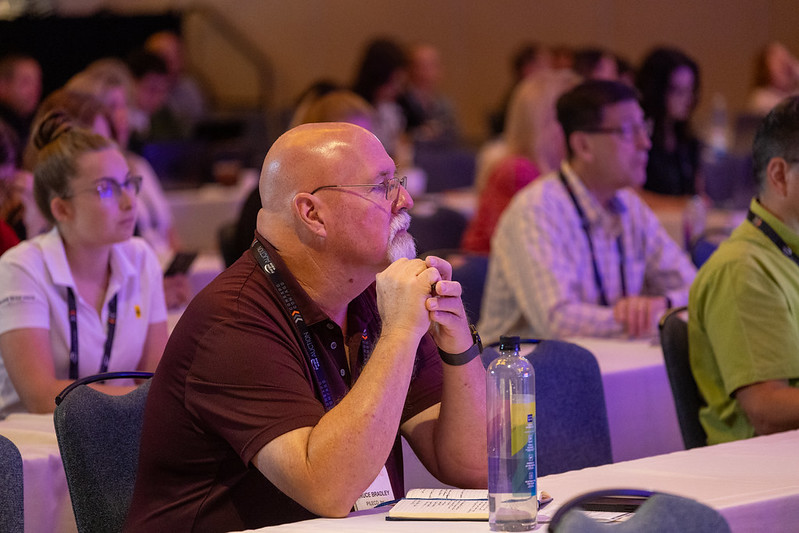Not everyone is born to be a leader. The good news, however, is that leadership skills can be developed and refined over time, opening the door to career advancement and higher wages for many in the equipment manufacturing industry.
According to leadership expert Terry Tennant, who has presented in the past at CONEXPO-CON/AGG, North America's largest construction trade show, the first step is recognizing what constitutes a good leader.
“The measure of a good leader is how well their team functions without them,” said Terry Tennant.
It’s not the easiest concept to grasp, particularly for those who have worked their way up the corporate ladder. They tend to rely on tried and true technical skills, and they often have a hard time letting go of the day-to-day tasks they’ve grown accustomed to doing over the course of years. But, in the end, they must, because their ability to embrace a new role as a leader and what that responsibility entails depends on it.
Stay in the know on important show information related to CONEXPO-CON/AGG 2026. Sign up for show alerts.
Common Leadership Pitfalls to be Avoided
- Using the power of the position rather than coaching
- Reactively putting out fires rather than proactively developing longer-term solutions
- Making decisions their employees should be making
- Micromanaging employees rather than helping them develop
- Not clearly communicating expectations
- Not holding employees accountable for performance
- Not providing effective performance feedback and training
- Assuming that what motivates them will motivate their employees
“These are all symptoms that leadership development is needed,” said Terry Tennant, who with his wife, Linda, own Attainment Inc., a Phoenix, Arizona-based consulting firm that helps successful people move to the next level.
“Great leaders find out what motivates each and every person they are managing,” he continued.
Similarly, leaders should look for the root cause of poor employee performance. Many times, the cause can be traced right back to the leader. For example:
- Employees don’t know what to do – likely a communication problem
- Employees don’t know why it’s important – likely a communication problem
- Employees don’t know how to do the job – likely a training problem
- Employees don’t want to do the job – possibly a motivation problem
Learn to Prioritize and Manage by Goals
Linda Tennant says that one of the biggest challenges for many aspiring leaders today is transitioning from a reactive mindset to a proactive one. This requires leaders to have a plan that essentially prioritizes tasks—with total team performance in mind.
“Recognize that efficient and effective are two different things,” said Linda Tennant. “Efficient is about getting everything done as quickly as possible. Effective is about getting the right things done. It’s important for a leader to get the right things on the task list.”
High-payoff activities (HPAs) are those six most important activities in which a person should dedicate at least 80 percent of their time. First, however, leaders should identify their own HPAs. Then they will have time to help employees develop their own.
Leadership HPAs vary from company to company, because every organization and circumstance are different. In some companies, leaders will be responsible for certain day-to-day technical tasks. That said, there are some common leadership HPAs that all leaders should include on their priority list:
- Achieve business financial goals
- Communicate company vision, values and goals
- Identify HPAs, key performance indicators, scorecards for employees
- Provide employee performance feedback and coaching
- Help employees develop motivation, career plans and training plans
- Develop, document and improve processes
“These areas are where a leader should spend most of their time,” said Linda Tennant. “The focus of a leader is all about their employees’ performance. A leader’s job is to make the team more productive.”
Once leadership HPAs are developed, the next challenge for a leader is to get on track in terms of spending the majority of their time on them. Linda Tennant offered some advice:
- Schedule blocks of time to plan and work on HPAs
- Control interruptions during those blocks of time
- Delegate low-payoff activities that others could be doing
Access more resources and information by visiting the AEM Workforce Solutions Toolkit.
Establish a Delegation Plan
Delegation can be a significant challenge for many leaders. It can be all too easy to assume that employees will never do a job as well or as quickly as the leader. At the same time, the leader sometimes fears being viewed by their superiors as not working hard enough or making a big enough contribution.
In reality, proper delegation is instrumental to a company’s ability to thrive and grow. Effective delegation allows more employees to learn more tasks, which enables more people to take on more responsibility as a company expands. Delegation also helps leaders free up more of their time to spend on their own HPAs, which is the real secret to maximizing team performance.
“If a leader can delegate one task that takes a half-hour each day to complete, the leader will free up an entire month of time over the course of a year,” said Linda Tennant.
Leaders can start by successfully identifying a task one of their employees could either do better, for less time or money, or simply for his or her personal development.
“Start with tasks that are pretty straightforward, almost mechanical in how they are accomplished,” she continued.
Doing so, she added, will help leaders begin delegating tasks quickly because less time will be needed on training and oversight.
How Leaders Effectively Use Authority
“Authority must be used effectively,” said Terry Tennant. By following some basic rules of thumb, it can be done.
Leaders shouldn’t try to be their employees’ friend. Leaders don’t want to be the enemy, either. The focus simply needs to be on getting the job done.
Leaders must consistently provide feedback, not to mention coaching. This is how leaders help their teams improve. Leaders should never ask if they can provide some constructive criticism, a popular phrase often used in management.
“All the employee hears is the second word: criticism,” said Terry Tennant. “Leaders should simply offer to provide some coaching. Coaching is a positive word because it’s about getting better and winning as a team.”
It’s important to provide feedback and coaching in a private setting with the employee. On the other hand, it’s okay to publicly praise employees for a job well-done. In fact, it’s advised. Public recognition when an employee(s) follows through on a commitment is essential to building a self-motivating team.
At the same time, leaders must follow through on their own commitments. This is how leaders build credibility and inspire their teams.
“Leaders need a system to make sure that when they say they are going to do something, they follow through and do it,” said Terry Tennant.
Finally, leaders must provide clear job expectations—and in writing.
“Then leaders can provide performance measurements, offer feedback and hold people accountable,” said Terry Tennant. “When employees understand what is expected of them, that actually makes the leader’s job a lot easier.”
Subscribe to the AEM Industry Advisor for more perspectives on issues important to the equipment industry.





